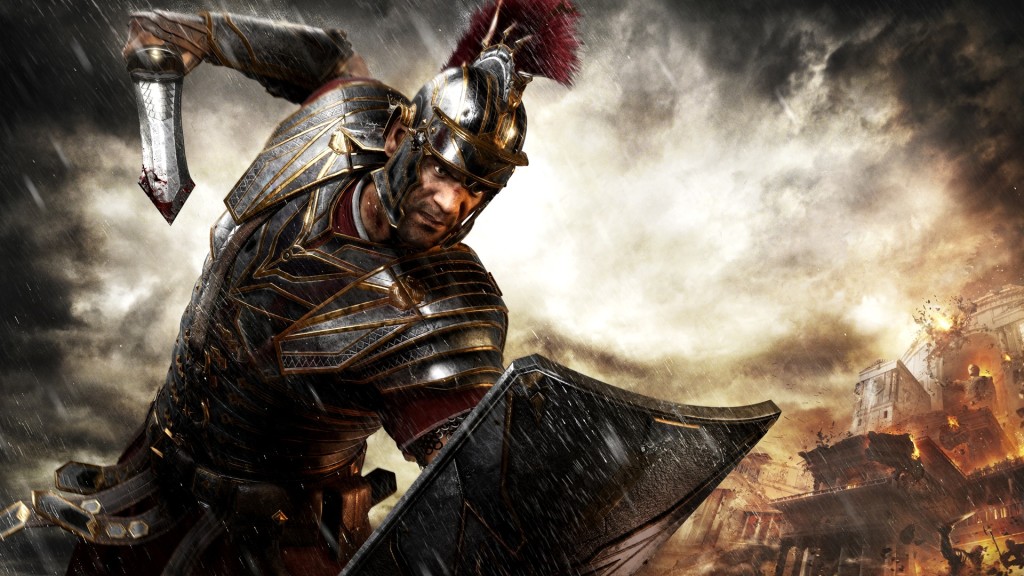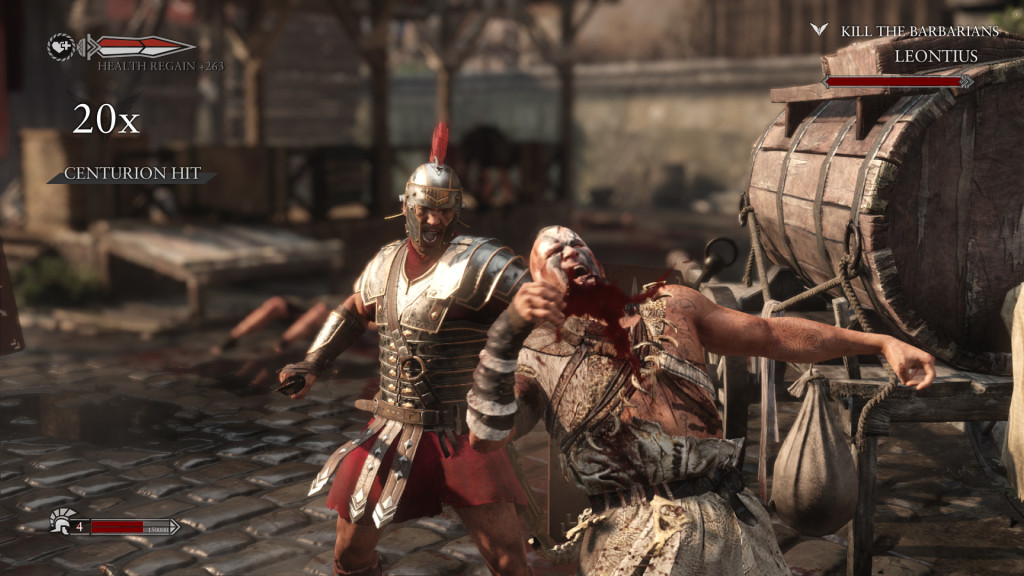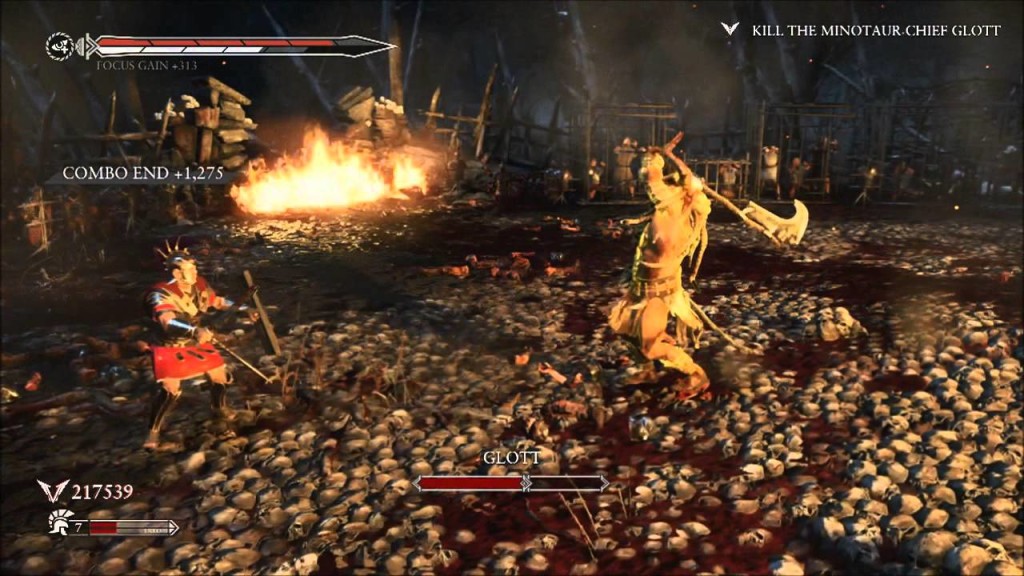Last updated on February 18, 2016
 Ryse: Son of Rome does, in some respects, show its origins as a Xbox One launch title – or extended technology demo, depending on your perspective – due more to its length and its graphical prowess than its actual mechanics. Regardless of that, I’m giving a full recommendation to the PC version, released on Steam in 2014, on the basis of its combat. Ryse remains a mechanically solid, remarkably satisfying beat’em up in the vein of Bayonetta more than God of War, and that can’t be a bad thing!
Ryse: Son of Rome does, in some respects, show its origins as a Xbox One launch title – or extended technology demo, depending on your perspective – due more to its length and its graphical prowess than its actual mechanics. Regardless of that, I’m giving a full recommendation to the PC version, released on Steam in 2014, on the basis of its combat. Ryse remains a mechanically solid, remarkably satisfying beat’em up in the vein of Bayonetta more than God of War, and that can’t be a bad thing!
Honestly, I’m totally surprised with how quickly Ryse becomes enjoyable; Crytek, after all, is known primarily for creating Far Cry and Crysis, two series known for their open-ended tactical first-person shooting than anything else. As such, Crytek’s game don’t come near my wheelhouse very often; while there are joys to Crysis’ combat, just for example, I always feel like the game simply takes too long to get from point A to point B, without enough vested interest to fully enjoy it. The strategic variance of cloaking, super strength, and tons of destructible stuff makes it interesting, but I always question why it doesn’t work for me.
I think the answer lies in this: I am a console gamer at heart. Particularly in a shooting game, I want the game to lead me into varied combat scenarios and environments, forcing me to deal with them. Clearly, Crytek saw their style wouldn’t work for a console crowd, and adjusted their signature ideas accordingly. While retaining their “graphics jacked up to realism +11” style, they’ve also managed to create a Call of Duty game…in ancient Rome…with Batman combat. The boardroom meeting that conceptualized this game must have been especially interesting!

Still, we can call the plot far more interesting than almost any Activision product from the outset. Crytek clearly took inspiration from Gladiator (one of my favorite films, not surprisingly) and 300 (one of my least favorite films, just for good measure) to craft the world of Ryse. In no way should you expect a historical depiction of ancient Rome in any way, if the British accents (a trope of Rome movies) and a random strip club scene tells you anything. Surprisingly, there’s no nipples, though, no nipples for anybody whether male or female, which should confuse a good deal of us. Rather, Ryse goes for a “historical realism” angle, to create a standard revenge story with the trappings of Roman and Gaul culture thrown into the mix.
Yes, it’s all rather standard, and I honestly could not care less about Marius’ story (I had an inkling how it would end before it began), but you rarely see a game where the actual in-game graphics don’t descend into the uncanny valley. I was taken aback myself that my brain accepted these characters as real, and that’s quite an accomplishment! I feel a bit sad that it seems wasted on such a generic character and narrative that appear more an excuse for level variance and the re-use of assets than anything else, but I appreciate the effort put into the graphics. That goes especially for the PC version, which consistently hits 60 FPS (unlike the Xbox One version, weirdly) and looks wonderfully fluid as a result.

Now, let’s get to the part that I actually like: the combat. I described it as “Batman” combat game,but I find this an unfair comparison for a few reasons. First, in the Arkham game, you can often dodge and evade to your heart’s content, without enemies being able to interrupt you at all. Even on higher difficulties, you simply bounce around like a maniac waiting for an opening; the game clearly wasn’t designed with high enemy damage in mind (or a lack of tells on enemy attack/countering), so it often felt incomplete in execution. Then again, Batman’s more an exploration/stealth game with a light touch of fighting, so it is somewhat forgivable.
In Ryse, the combat is the game, apart from a few ranged combat sequences (and controlling battalions, but we’ll get to that). You watch a cutscene, you run forward, you brutally murder some barbarian dudes. Sometimes, the dudes have masks on, whether skulls or Roman something or others, but the result ends up being the same: murder some dudes. The approach works, since we in popular culture expect nothing more than this from our media set in “Rome”. Thankfully, the combat holds your interest long after the credits roll, at least for me!
Note: since the game came out on Xbox One and PC, and I’m using an Xbox 360 controller, the inputs should be the same for the following.
Ryse provides you with two main attacks: a sword slash, done by pressing X, and a shield bash, attached to the Y button. There’s no “combos” in this game within the formal sense; you can press them in whatever order you like, infinitely. The sword slash takes out the most damage, and comes out much more quickly, while the shield bash can break the guard of enemy shields (while also causing damage). Both attacks can be “charged” by holding the button down. Not surprisingly, the charged version of each put you at risk of attack due to their wind-up time, but you’ll need them against the higher grade enemies. As well, enemies will often start evading attacks if you rely on one too much, so you’re encouraged to vary your attacks. You certainly don’t want an enemy to break open your guard!
Further, the game gives the player two evasion options: a shield deflect (“parry”, we might called) and a evasive roll. The deflect works as your “counter” button from Batman, hence why I compare it to Batman’s combat. Enemies will try to attack you when you’re engaged with other enemies; tap the A button with the right timing, and you’ll deflect the attacker. Press it with even more precise timing (i.e., a Perfect Parry), and you’ll break the attacker’s guard, allowing you to get in some hits. Note that you don’t need to be standing still to deflect attacks, as the A button command will, for the most part, immediately cancel the move you’re currently performing.

Because of that freedom to cancel attacks, enemies don’t attack “one at a time”, like they do in the Arkham games. In many situation, you’ll need to observe the tells and windup of attacks to parry multiple attacks in a row, or simply to figure out which parry you need to time perfectly. It can be intense on higher difficulties, as the possibility of failure ratchets ever higher. As well, some attacks can only be blocked with a Perfect Parry; enemies usually glow red before performing these massive attacks (at least on difficulties below Legendary), and then require a very good understanding of the attack animation to Parry Perfectly. Even then, you only prevent damage, rather than actually breaking their guard. Marius blocks, but ends up in blockstun for a few precious seconds.
So, is there a good way to deal with this problem? Enter the evasive roll. Using the B button causes Marius to roll in a direction, much like other games in this genre. The roll, of course, can evade “red” attacks, and that seems to be its primary use. Red attacks often track you, so you need to roll away from your initial position. Thus, you either parry an attack and remain in the thick of it, or roll away and potentially lose your positioning. It’s a tricky balance of moment-to-moment situations, and it forms the core of Ryse’s particularly interesting feedback loops. The game actually forces you to think about what button you should use, offensively or defensively, and that’s a good thing!
I will say I didn’t like this system at first – juggling two offensive options seems anathema in a modern combat action game, and it took quite a few hours for me to get used to it. The difference, in the long run, is such: a parry is a commitment, and a dodge is the safe way out. When you attempt a parry, Marius will be left open for a few seconds if he misses parries, even several in a row (which all require timed button presses, no joke). Thus, knowing when to dodge becomes an essential skill to both not die and keep your combo meter going, and the game forces interesting defensive decisions. Again, it’s weird, and it takes time to get used to it, but I found it differentiates Ryse from its peers.
